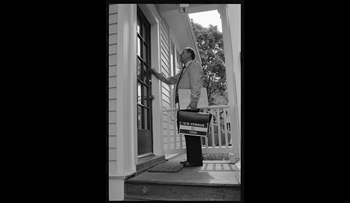The “apportionment formula” was devised by early policymakers, including Thomas Jefferson, Alexander Hamilton and Daniel Webster to ensure equal representation in the U.S. House of Representatives for each state according to the number of people living in it. At the time of the first Census, New York State was apportioned 6 seats. In June of 1929, the House of Representatives passed the Permanent Apportionment Act of 1929, setting the number of Representatives at 435. After each decennial census since 1930, seats have been apportioned among the states using the Huntington-Hill method (a version of the Webster formula) established in that act. The number of seats in the House of Representatives since the 1930 Census has remained at 435, despite the growing U.S. population: meaning the constituent base of each Representative has been increasing in size – and likely in diversity! From 1933 through 1950, New York representation peaked with 45 seats in the House! New York lost two seats following the 1950 Census and continued to lose seats from that point forward following every reapportionment. Today, New York has 27 seats in the House, and after the 2020 Census, may lose even more seats in the event of an “undercount.”
The goal of the Census is to ensure fair representation. But the goal of the US Census Bureau under the Department of Commerce is to also record unique features of sub-populations that are important to count as well, since this data impacts the amount of resources (dollars and people) allocated to various federal programs. Questions about education, such as enrollments and graduations are important in adjusting budgets for federal college loans programs and school aid; questions identifying populations with mental and physical disabilities will influence budget decisions with respect to federal aid to states and individuals for medical program assistance; and information gathered about home ownership and income help policymakers set priorities for economic assistance in boosting the job market. The US Census also helps set national goals for the future of rural and urban America.
Change in population in City of Buffalo, using 1920-1930 US census data. Image provided the Buffalo History Museum on New York Heritage.
U.S. census enumerator knocking on door, 3 May 1990. Jenkins, R. Michael, photographer. Source: Library of Congress, Prints & Photographs Division.

